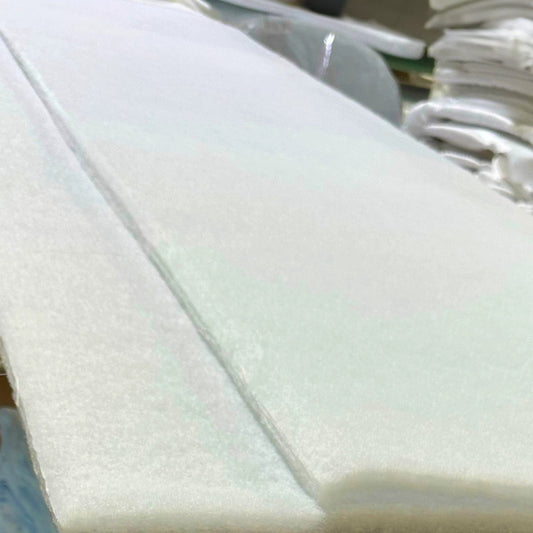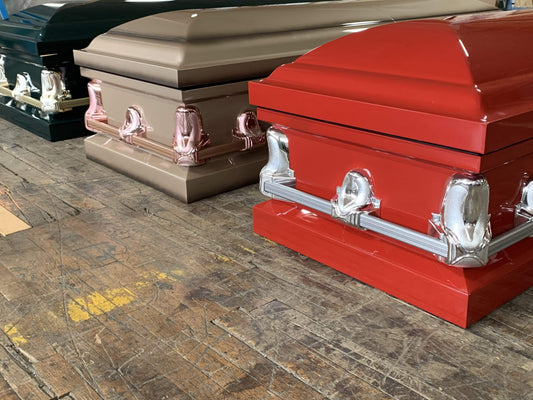There are many types of cremation urns, each designed for a specific use — whether you're planning to keep, bury, scatter, or share the ashes. Here’s a simple guide to help you understand the most common types.
1. Display Urns
-
Purpose: Designed to be kept at home or in a columbarium niche
-
Materials: Metal, wood, ceramic, or marble
-
Features: Durable, decorative, often engraved
2. Burial Urns
-
Purpose: Made for underground burial
-
Materials: Metal, stone, or composite
-
Features: Often paired with an urn vault for protection in the ground
3. Biodegradable Urns
-
Purpose: For eco-friendly ground or water burials
-
Materials: Paper, salt, sand, cornstarch, or bamboo
-
Features: Breaks down naturally in soil or water over time
4. Scattering Urns
-
Purpose: Designed for spreading ashes in a meaningful location
-
Materials: Cardboard, paper, or lightweight metal
-
Features: Portable, often shaped for easy handling during ceremonies
5. Keepsake Urns
-
Purpose: Hold a small portion of ashes — meant for sharing among family members
-
Materials: Same as full-size urns, but mini-sized
-
Features: Can be matched with the main urn or designed individually
6. Companion Urns
-
Purpose: Designed to hold the ashes of two people (usually a couple)
-
Materials: Metal, wood, ceramic
-
Features: Larger capacity (usually 400 cubic inches or more)
7. Cremation Jewelry
-
Purpose: Tiny urns in the form of wearable pendants, bracelets, or rings
-
Materials: Stainless steel, silver, gold, or glass
-
Features: Holds a very small amount of ashes, perfect for keeping close
Here’s a clean and presentable table format to explain different types of cremation urns:
| Type | Purpose | Common Materials | Key Features |
|---|---|---|---|
| Display Urns | Meant to be kept at home or in a columbarium niche | Metal, wood, ceramic, marble | Durable, decorative, often engravable |
| Burial Urns | Designed for underground burial | Metal, stone, composite | Often used with an urn vault for added protection |
| Biodegradable Urns | For eco-friendly ground or water burials | Paper, salt, sand, cornstarch, bamboo | Breaks down naturally in soil or water over time |
| Scattering Urns | Used for spreading ashes in a meaningful location | Cardboard, paper, lightweight metal | Portable, shaped for easy handling during ceremonies |
| Keepsake Urns | Holds a small portion of ashes — ideal for sharing among family | Miniature versions of display or burial urn materials | Small, can match main urn or have a unique design |
| Companion Urns | Made to hold the ashes of two people (typically a couple) | Metal, wood, ceramic | Larger capacity (400+ cubic inches) |
| Cremation Jewelry | Wearable miniature urns like pendants, bracelets, or rings | Stainless steel, silver, gold, glass | Holds a tiny amount of ashes, personal and wearable |
Final Answer
Cremation urns come in many types — from display and burial urns to biodegradable, keepsake, and jewelry options. The right choice depends on how you plan to honor and remember your loved one.
Related FAQs
What’s the most common type of urn?
Display urns are the most common, often chosen for home memorials or columbarium storage.
Do I need a special urn for burial?
Yes. Burial urns are made to withstand soil pressure, and most cemeteries require a vault.
Can you split ashes between urns?
Yes. Keepsake urns or cremation jewelry are designed for this purpose.

![Upgrade to Premium Weight [18-gauge steel]](http://titancasket.com/cdn/shop/products/casketthicknesswithnumbers.png?v=1680642906&width=533)



